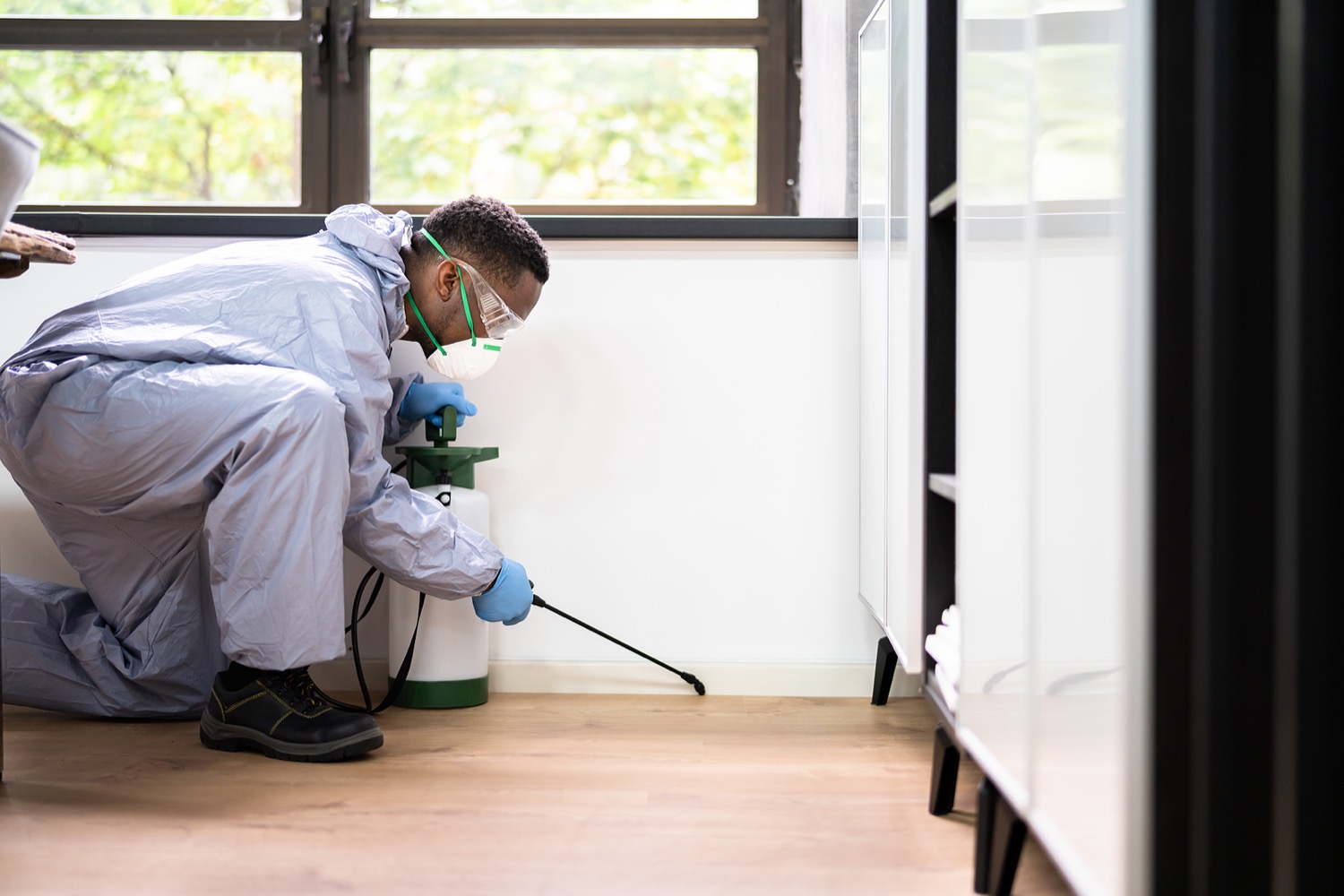A1 Bed Bug Exterminator Charlotte - Specialized Bed Bug Removal
A1 Bed Bug Exterminator Charlotte - Specialized Bed Bug Removal
Blog Article
Bed Bug Therapy Failure: Contrasting Chemical Vs. Non-Chemical Solutions
In the world of bug control, especially when managing the persistent problem of bed insects, the choice between chemical and non-chemical therapy services can be an essential one. Both techniques use distinct benefits and downsides, affecting aspects such as performance, safety and security considerations, and overall expense. By analyzing the nuanced information of each approach, a clearer understanding of which course to pursue in addressing a bed insect infestation can be acquired.
Efficiency of Chemical Treatments
Chemical treatments for bed bug infestations have been extensively recognized for their potent and fast efficacy in removing these parasites. When taking into consideration the performance of chemical treatments, it is critical to understand that they can provide a complete and quick option to a bed insect issue. Specialist pest control operators commonly count on pesticides to target bed insects at numerous stages of their life process, consisting of fairies, grownups, and eggs. These chemicals typically function by interfering with the bed pests' anxious system, bring about paralysis and ultimate fatality.
In addition, chemical therapies have the benefit of offering residual impacts, meaning that they can remain to eliminate bed insects also after the preliminary application. This recurring activity is especially beneficial in combating any potential re-infestations. In addition, the fast activity of chemical treatments can bring alleviation to individuals facing serious bed insect invasions, permitting them to restore control of their home rapidly.
Safety Worry About Chemical Solutions
One critical facet that calls for cautious factor to consider when making use of chemical options for bed insect therapy is making sure the safety of occupants and the setting. Exposure to specific chemicals utilized in bed pest treatments can lead to respiratory issues, skin inflammation, or various other negative responses, particularly in individuals with pre-existing conditions or level of sensitivities.
Furthermore, the environmental effect of chemical solutions is another considerable factor to consider. Some chemicals used in bed pest treatments may be hazardous to advantageous pests, wildlife, and environments if they seep into the soil or water systems. It is important to make use of chemical therapies sensibly, complying with safety and security standards, and considering much less toxic alternatives to mitigate these risks and make certain the secure and reliable management of bed insect invasions.
Advantages of Non-Chemical Strategies
Considering the possible safety worries and ecological impact connected with chemical options for bed bug treatment, exploring non-chemical strategies presents an appealing choice with numerous unique advantages. Non-chemical treatments are ecologically pleasant, as they do not contribute to air or water pollution, making them a sustainable choice for pest control.
In addition, non-chemical options can be effective in targeting bed bugs, including hard-to-reach areas where chemical therapies might not permeate. Techniques such as warm therapy, vacuuming, vapor cleansing, and bed mattress encasements provide thorough removal without the use of unsafe chemicals. Moreover, non-chemical techniques can be less turbulent, calling for minimal prep work and enabling quicker reentry right into treated areas. On the whole, selecting non-chemical bed insect therapy rabbit pest control approaches not only focuses on safety and security and ecological defense but likewise guarantees effective and comprehensive parasite control.
Limitations of Non-Chemical Treatments

Additionally, non-chemical therapies usually require numerous applications to attain successful removal. This can be taxing and may not constantly assure full elimination of all bed pests and their eggs, particularly in surprise or hard-to-reach places.
In addition, the success of non-chemical treatments greatly depends on proper application and thoroughness, which can be challenging for individuals without expert knowledge. Poor application of non-chemical approaches might cause insufficient obliteration, causing persistent problems and the requirement for extra treatments.
For that reason, while non-chemical treatments have their advantages, it is vital to acknowledge these constraints and consider them when identifying the most reliable strategy for handling bed insect invasions.
Price Contrast: Chemical Vs. Non-Chemical Options
Provided the limitations related to non-chemical therapies, a crucial element to review in the context of bed bug monitoring is the cost contrast in between chemical and non-chemical choices. Chemical treatments generally include the application of insecticides by specialists, which can vary from $250 to $900 per room, relying on the intensity of the invasion and the size of the area to be dealt with. On the other hand, non-chemical therapies like warmth therapy or heavy steam can be much more pricey, with expenses varying from $1,000 to $6,000 for a whole home. While the initial cost of chemical therapies may seem lower, numerous therapies may be needed to fully eliminate the problem, potentially increasing the overall price. On the various other hand, non-chemical options might offer a much more eco-friendly and lasting option, although they can be cost-prohibitive for some individuals. Ultimately, when thinking about the expense of bed insect treatment alternatives, it is essential to weigh the upfront expenditures versus the efficiency and lasting sustainability of the picked approach.
Conclusion

Considering the prospective safety worries and ecological effect linked with chemical services for bed bug treatment, checking out non-chemical techniques presents a promising option with a number of unique advantages.Given the constraints connected with non-chemical treatments, a crucial element to examine in the context of bed insect management is the cost comparison between chemical and non-chemical options. In contrast, non-chemical therapies like warmth therapy or vapor can be more costly, with costs varying from $1,000 to $6,000 for a whole home. While the first price of chemical treatments may appear reduced, multiple treatments may be called for to completely eliminate the problem, possibly raising the overall expense.In verdict, when contrasting chemical and non-chemical bed insect therapy options, it is essential to think about efficiency, security, benefits, constraints, and price.
Report this page